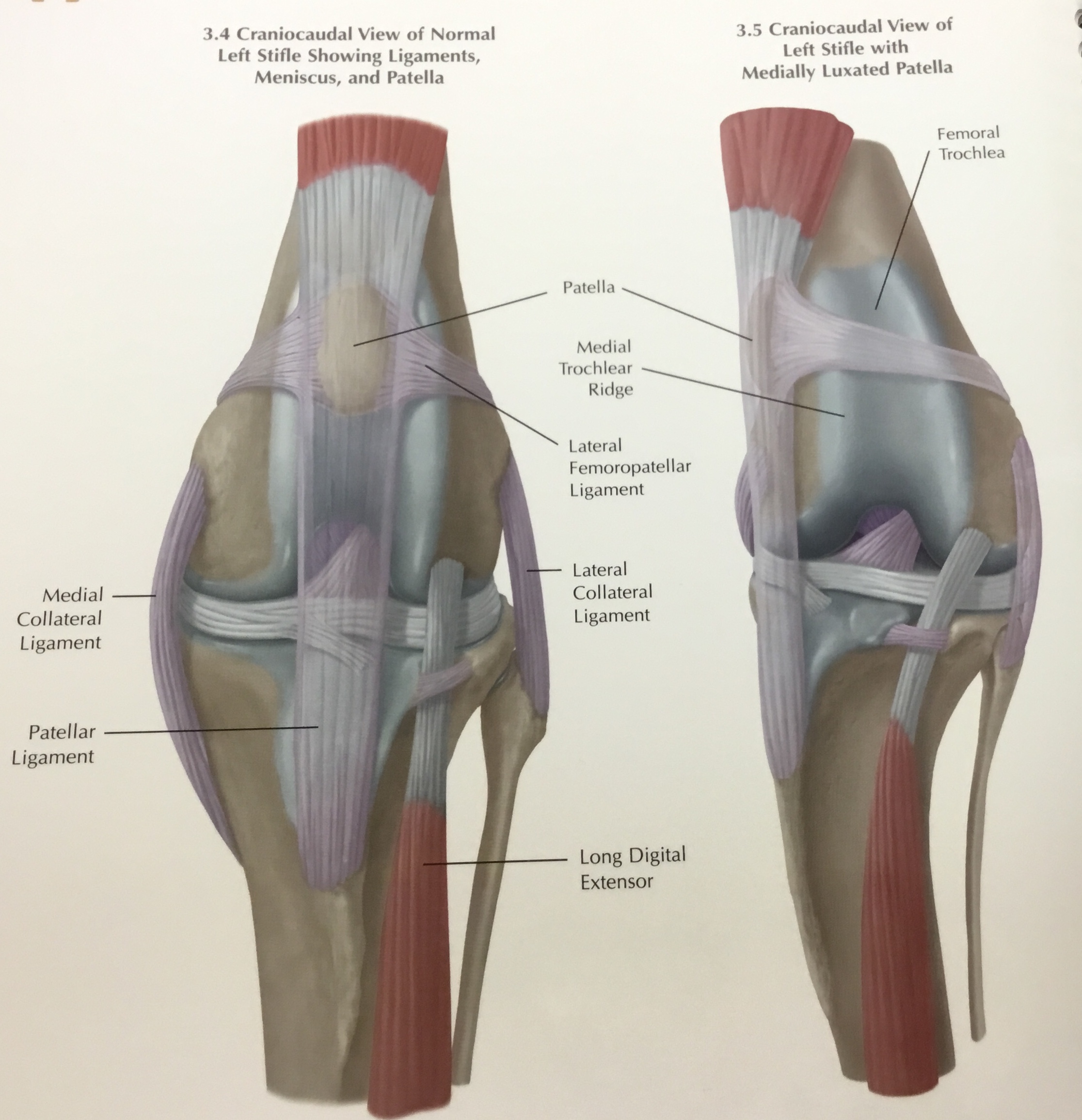
Luxating Patella
Our smaller patients frequently suffer from luxating patellas, a dislocated knee. This condition is common in many small and toy breed dogs, most notably the Toy Poodle and Yorkshire Terrier. Though not as common, cats can also suffer from luxating patellas.
The knee joint is comprised of four bones, the femur, patella, tibia, and fibula. Just like a human knee, large tendons hold the patella in place. The patella sits in the patellar groove on the front of the femur. In a normal knee, the patella moves up and down in its groove as the knee straightens and extends.
In a knee with patellar luxation, the patella dislocates out of its groove to the inside or outside of the groove. About 75% of patients have patellas that move to the inside of the leg. Over time this movement causes wear to the cartilage that covers the knee joint. This can cause pain and degenerative joint disease.
The most common sign of luxating patellas is intermittent rear limb lameness ranging from a limp to non-weight bearing. Diagnosis can be made by feeling the movement of the patella or visually on radiographs. Once diagnosed, this condition is classified into one of four grades.
- Grade I patellar luxation rarely shows clinical signs. Diagnosis is most often made during yearly preventative health exams by manually moving the patellar out of position. However it will spontaneously correct itself.
- Grade II may appear as a skip in the pet’s gait. The patella will move out of place as they are running then slip quickly back into place. When diagnosing, the patella will move in and out on its own as the leg is bent and straightened.
- Grade III and IV are uncomfortable for the pets and affect their gait significantly. Pets may limp or not place any weight on the limb. When diagnosing a grade III the patella will move out of place when the leg is bent and straightened and needs to be manually replaced. With grade IV the patella will move out of place and cannot be replaced manually.
Treatment is based on the grade of luxation. Grade I luxation rarely requires treatment. Grade II are evaluated on a case by case basis, and may respond well to anti-inflammatory medications. Grade III and IV generally require surgical correction. There are two procedures to correct a luxating patella. The first involves deepening the groove the patella sits in. The second repositions a part of the tibia which straightens the leg, reducing the tension pulling the patella out of place.
Prognosis is usually good for all pets suffering from patellar luxation. Changes to exercise routines, medications, and surgical treatments can help alleviate any discomfort a pet may suffer from this condition.





Recent Comments